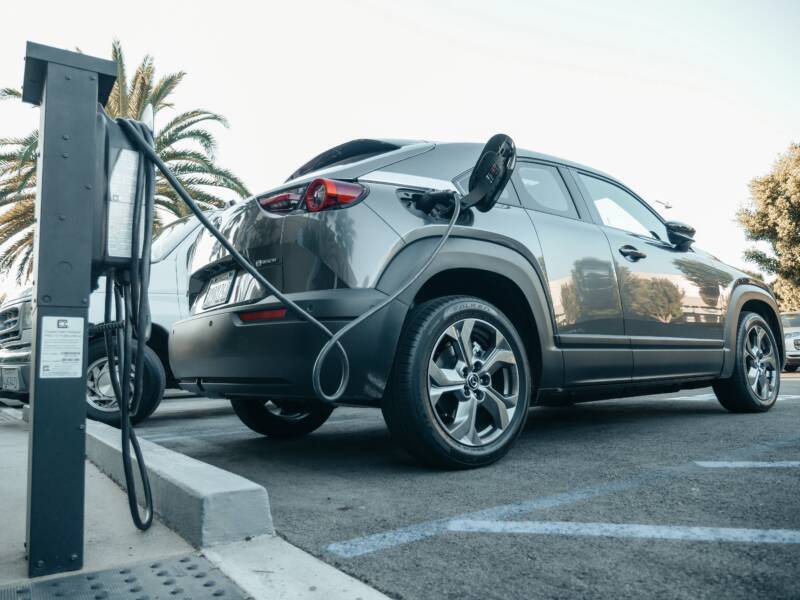The shift towards electric vehicles (EVs) as a more environmentally friendly and sustainable means of transportation is fueling innovations in various aspects of the automotive sector. A critical component is the creation of heat resistant materials for electric vehicle batteries. In this article, we will delve into the importance of these materials, the issues they tackle, and the progress that is defining the future of electric vehicle technology.

Electric Vehicles
At the core of the EV evolution lies electric vehicle batteries, which supply the necessary energy for propulsion and on-board systems. Nevertheless, these batteries produce a considerable amount of heat during charging and discharging processes. Excessive temperatures can adversely affect battery performance, durability, and safety. To address these hurdles, experts and engineers are actively investigating heat resistant materials.
Lithium-Ion Batteries and Temperature Control
Temperature variations greatly affect lithium-ion batteries, which are widely used in electric vehicles. Excessive heat may result in thermal runaway, posing safety concerns and shortening battery lifespan. The implementation of advanced temperature management systems is a crucial approach to address these issues. These systems, featuring heat resistant materials, are vital for sustaining ideal operating temperatures within the battery pack.
Ceramic-based Separators
Ceramic separators are an emerging category of heat resistant materials being incorporated into lithium-ion batteries. Conventional polymer separators tend to deteriorate at elevated temperatures, potentially causing thermal runaway. Contrarily, ceramic separators provide enhanced thermal resistance and can endure extreme heat situations. Utilizing them not only improves battery safety but also aids in extending battery longevity.
Temperature-Resistant Electrolytes
A vital element in electric vehicle batteries is the electrolyte. Traditional liquid electrolytes tend to be susceptible to temperature variations. As a remedy for this issue, temperature-resistant solid-state electrolytes are gaining traction. These solid-state electrolytes possess enhanced thermal stability and can function effectively at high temperatures. By integrating such materials, EV producers can augment the heat endurance of their battery systems.
Temperature-Resistant Coatings
Besides advancing the fundamental components of batteries, temperature-resistant coatings play a crucial role in protecting delicate areas within the battery pack. These coatings serve as a shield, stopping heat from impairing essential battery parts and insulating them against external temperature changes. Cutting-edge coatings, such as nanoscale materials, are being designed to boost the overall thermal management of EV batteries.
Phase Change Materials
Phase change materials (PCMs) are an innovative approach to temperature regulation within electric vehicle batteries. These materials can absorb and release heat during phase transitions, maintaining the battery’s temperature within a safe range. PCM integration helps to reduce temperature fluctuations during operation and provides a more consistent and stable thermal environment for the battery.
Composite Materials
Combining multiple materials into composites is a common strategy to enhance heat resistance in electric vehicle batteries. By carefully selecting and engineering the constituents, these composite materials can achieve a balance between mechanical strength, thermal conductivity, and resistance to high temperatures. This versatility allows manufacturers to tailor the material properties to meet specific requirements.
Progress in Nanomaterials
Continuous research and development in nanomaterials science are on track to transform the heat resistance properties of electric vehicle batteries. Nanomaterials enable meticulous manipulation of material structures and characteristics, leading to the invention of innovative heat resistant solutions. Ranging from nanocomposite electrodes to nanoparticle-augmented thermal interfaces, these materials have the potential to further enhance the thermal efficiency of EV batteries.
With the rising demand for electric vehicles, there is also an increasing necessity for heat resistant materials capable of coping with the distinct challenges presented by battery technologies. Breakthroughs in ceramic separators, solid-state electrolytes, graphene-derived materials, and cutting-edge thermal management systems contribute to making electric vehicle batteries more effective, dependable, and secure. Ongoing research and development in this area promise even more significant discoveries, propelling the electric vehicle transformation towards a more sustainable and efficient future.

Ingrid Maldine is a business writer, editor and management consultant with extensive experience writing and consulting for both start-ups and long established companies. She has ten years management and leadership experience gained at BSkyB in London and Viva Travel Guides in Quito, Ecuador, giving her a depth of insight into innovation in international business. With an MBA from the University of Hull and many years of experience running her own business consultancy, Ingrid’s background allows her to connect with a diverse range of clients, including cutting edge technology and web-based start-ups but also multinationals in need of assistance. Ingrid has played a defining role in shaping organizational strategy for a wide range of different organizations, including for-profit, NGOs and charities. Ingrid has also served on the Board of Directors for the South American Explorers Club in Quito, Ecuador.








































